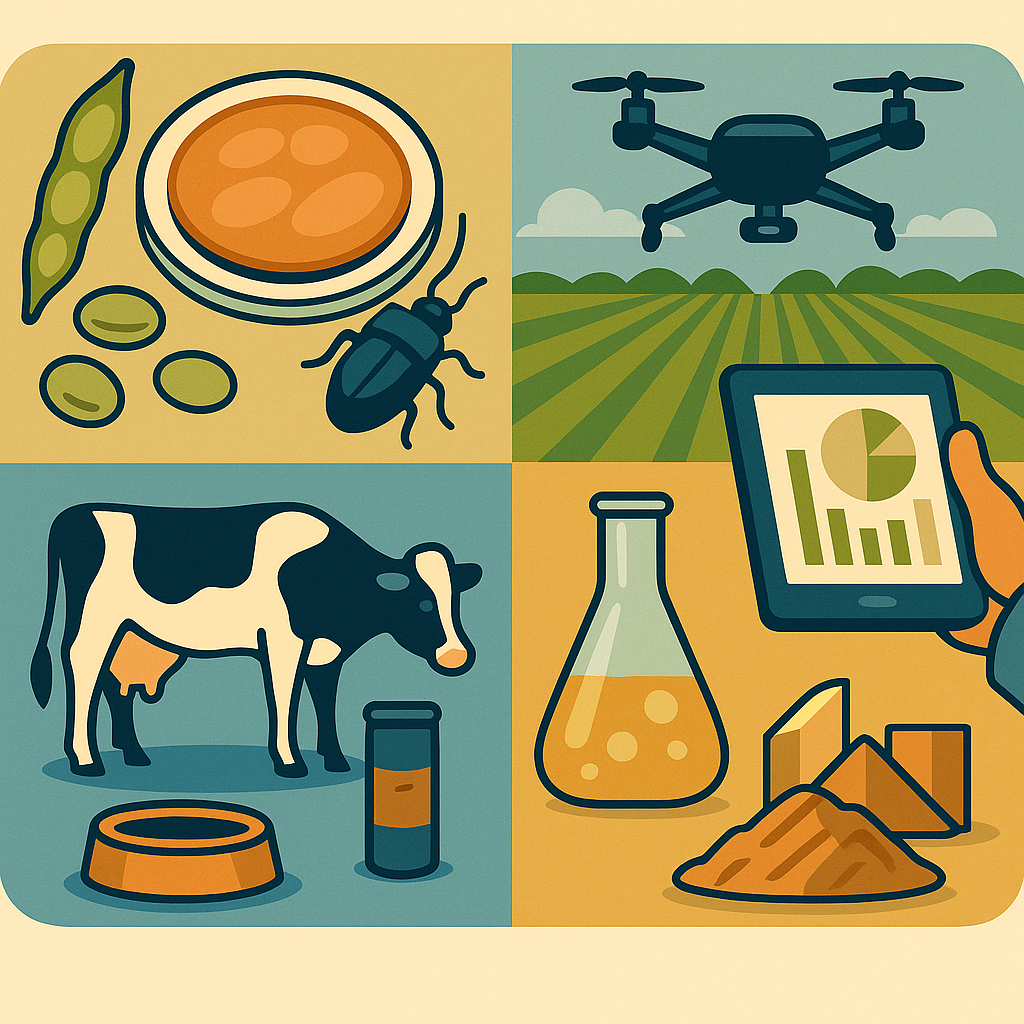New Technologies in Food and Feed Production — What Does the Future Hold?

🌱 New Technologies in Food and Feed Production — What Does the Future Hold?
The world of agri-food is undergoing a profound transformation. In the face of population growth, climate change, resource scarcity, and sustainability demands, the food industry and animal feed producers must adapt. At the heart of this transformation lie new technologies in food and feed production.
🧬 Alternative Protein Sources
Insects – Protein of the Future
Proteins from insects (mealworms, crickets, black soldier flies) offer high nutritional value and a low carbon footprint. They are increasingly used in feed additives.
Cultivated Meat – Without Animal Slaughter
Lab-grown meat is produced without killing animals, reducing water consumption and greenhouse gas emissions.
Microproteins – Fungi, Algae, Microorganisms
These protein sources are used in both human food products and animal feed. They are easily digestible and rich in essential amino acids.
🌍 Digitalization and Smart Farming
Technologies Transforming Agriculture
The use of drones, IoT sensors, and analytical systems allows farmers to monitor and manage processes in real time.
Big Data and AI in Agribusiness
Big data analysis and AI algorithms help forecast yields, automate feeding and irrigation, and reduce production losses.
🐄 Precision Feeding and Functional Feed
Individualized Nutrition
Each animal receives a diet tailored to its exact needs, improving productivity and herd health.
Reducing Methane and Using By-products
Thanks to special additives (e.g., seaweed-based), methane emissions are reduced. By-products such as corn bran, beet pulp, oilcakes, and DDGS are widely used as feed ingredients.
♻️ Circular Economy in Feed Production
Turning Waste into Resources
Processing residues (meals, oilcakes, bran) are converted into valuable resources — compost, biogas, biofuels, or feed.
Reusing Organic Material
Instead of being discarded, organic waste is reprocessed, helping reduce costs and minimize environmental impact.
🔍 Transparency and Clean Labels
Traceability Systems
Producers implement batch tracking, QR codes, and product transparency systems to strengthen consumer trust.
Clean Label – The New Quality Standard
Products without GMOs, preservatives, artificial colors, or flavorings are gaining popularity. Natural functional ingredients like probiotics, enzymes, and vitamins are being prioritized.
🚀 What to Expect in the Coming Years?
Robotics
Automation and robotics will become standard across all stages — from planting to packaging.
CO₂-Neutral Production
More companies will aim for zero net emissions in production processes.
Hybrid Products
Food of the future will combine traditional ingredients with innovative, science-based components.
🧾 Conclusion
New technologies in food and feed production are not just a trend — they are a necessity. They deliver efficiency, sustainability, transparency, and economic value.
Companies that invest in innovation today are building a better future — for the industry, for consumers, and for the planet.
